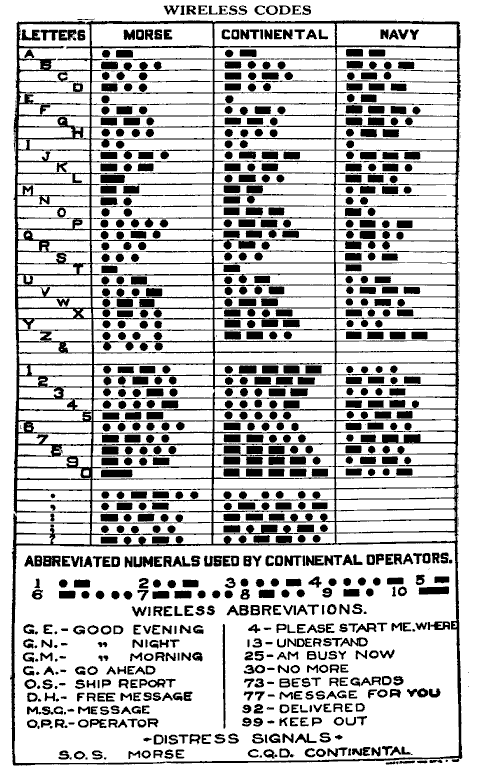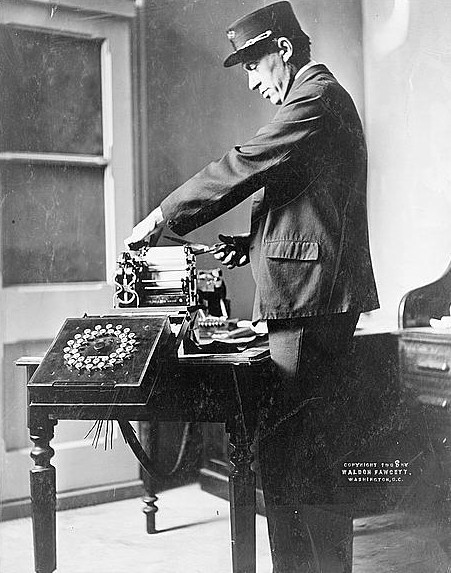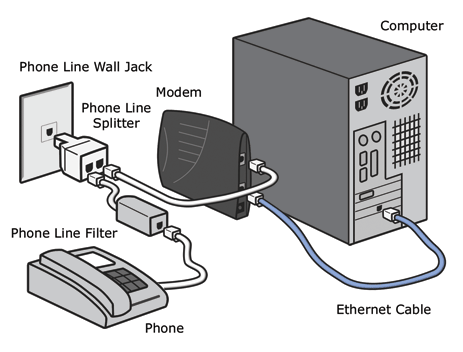Telecommunication - Creating and Receiving a signal
Creating and receiving a signal - Introduction:
The process of telecommunications, begin with messages which are usually converted into one of the twoo forms, namely electronic or optical signals.Some of the analog signals voice or music,(which are are created in an analog or wave format), must be converted into a digital form and the reason why these conversion takes place is that, for the faster and more efficient transmission and also for transmitting over a long distance.
The signals are then sent over a medium to a receiver, where they are decoded back into a form that the person receiving the message can understand.Usually there are a number of ways to create and decode signals, and many different ways to transmit signals.In this article let us discuss in detail about how to create and receive a signal.
Basic method:
When we consider devices like telegraph and telephone, these devices relay messages by creating modulated electrical impulses, or impulses which usually change in a systematic way.After this,these imulses are then sent along wires, through the air as radio waves, or via other media to a receiver, and the receiver then take cares of demodulating the modulated signals.Now let us discuss in detail how the signals are created and received in different devices
Telegraph:
The earliest method of delivering telecommunications,is the telegraph system, and this sytem works by converting the contacts (connections between two conductors which permits a flow of current) between a telegraph key and a metal conductor into the electrical impulses.The image below shows the old telegraph instrument used

After that, these impulses are sent along a wire to a receiver,so as to complete the communication process,where at the receiving end, the impulses are converted into short and long bursts of sound or even into dots and dashes which are imprinted on asimple printing device. Specific sequences of dots and dashes represent letters of the alphabet.Some of the codes and their corresponding words are explained below in the image

Different types of codes such as Morse, Continental and Navy codes are explained below

But during the early days of the telegraph,telegraph operators are usually used to decode these sequences.By this way the telegraph operators are able to transmit and receive letters that spelled words.As years proceed the tater versions of the telegraph were designed in such a way so that they could decipher the letters and numbers automatically, without any manual work.

At present in the 21st century, the use of telegraphs are reduced to a larger extent and now telegraphs are largely replaced by other forms of telecommunications,mainly by electronic mail (e-mail).Inspite of it slow use in this era, they are still used in some parts of the world to send messages.
Telephone:
The next technology which followed the telegraph system is the telephone.Usually in the case of telephone, we uses a diaphragm (small membrane) which is connected to a magnet and a wire coil, so as to convert sound into an analog or electrical waveform representation of the sound.

Thats why, when a person speaks into the telephone’s microphone,the sound waves which was created by the person's voice, will vibrate the diaphragm, and this in turn creates electrical impulses(digital form) which are sent along a telephone wire, which is a medium.The logic behind the working of telephone is explained below

At the receiver side,the receiver’s wire is usually connected to a speaker,and they convert the modulated electrical impulses back into sound, and this makes the person at the receiver end to able to hear the voice of the speaker at the transmitter end
Cellular radio phones:
Devices which use radio waves for creating a signal includes broadcast radio and cellular radio telephones, where they create signals by modulating radio waves. A radio wave is nothing but a type of electromagnetic radiation,where a form of energy that travels in the form of waves.
Microwaves are also electromagnetic waves, but with a shorter wavelengths and at a higher frequencies.Usually in this type of telecommunications, a transmitter creates and emits radio waves.These transmitters, electronically modulates or encodes sound or other types information onto the radio waves by either

1)Varying the amplitude (height) of the radio waves, or
2)By varying the frequency (number) of the waves within an established range.
At the receiver side,the receiver is tuned accordingly to a specific frequency or range of frequencies which will pick up the modulation which was added to the radio waves and a speaker which is usually connected to the tuner,take care of converting the modulation back into sound form so that it becomes an understandable message for the receiver.
Television Broadcasting:
The broadcasting of the television also works in the similar fashion, as described above.Here a television camera takes the light reflected from a scene and they convert them into an electronic signal,and this is transmitted over high-frequency radio waves.

A television also contains a tuner, that receives the signal and uses that signal to modulate the images seen on the picture tube. The picture tube usually consists of an electron gun which shoots the electrons onto a photo-sensitive display screen. These electrons will illuminate the screen wherever they fall, and thus moving pictures are created on the screen.However the image below explains the transmission via satellite

Digital transmission:
Usually the type of transmission that we have discussed in telegraphs, telephones, radio, and television is analog transmission where they work by modifying electronic signals, making the signals imitate, or reproduce, the original message.

But in the case of computers and other electronic equipments, they transmit digital information.In the case of these Digital technologies, first they convert a message into an electronic or optical form and they do this process by measuring different qualities of the message,which includes the pitch and volume of a voice, many times.
After that these measurements are then encoded into multiple series of binary numbers,i.e in the form of 1s and 0s and finally, they send impulses which corresponds to the series of 1s and 0s.
The reason why we go for digital information is that theycan be transmitted faster and it is more than analog signals, because the impulses only need to correspond to two digits(0's and 1's) and not to the full range of qualities that compose the original message, such as the pitch and volume of a human voice,as in the case of analog transmission.
These digital transmissions can be sent over wires, cables or radio waves,and most importantly, they must be decoded by a digital receiver.There has been a constant updation in the case of digital technologies and newer digital telephones and televisions are being developed to make telecommunications more efficient.
Usually the personal computers tend to communicate with each other or with a larger networ such as the Internet, by simply using an ordinary telephone network.At present,increasing numbers of computers rely on broadband networks, which are provided by telephone and cable television companies to send text, music, and video over the Internet at a very high speed.
As the telephone network functions, by converting sound into electronic signals, the computer must convert its digital data into sound form and to do this Computersuse a device called a modem, which is short for modulator/demodulator.The image of a modem is shown below

The function of the a modem is that, it converts the stream of 1s and 0s from a computer into an analog signal so that it can be transmitted over the telephone network, as a speaker’s voice would do.At the receiving end the modem of the receiving computer is set to demodulate the analog sound signal again into a digital which the computer can understand and process.The working of a modem is explained below.

Like it on Facebook, Tweet it or share this article on other bookmarking websites.

